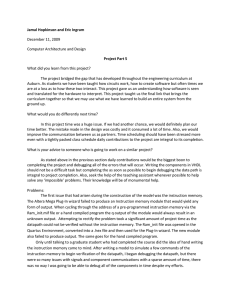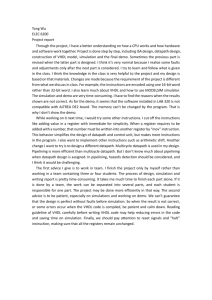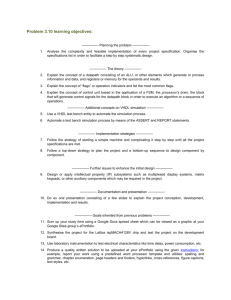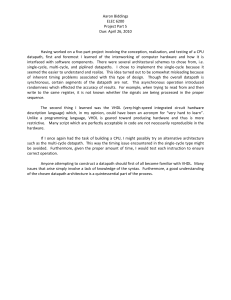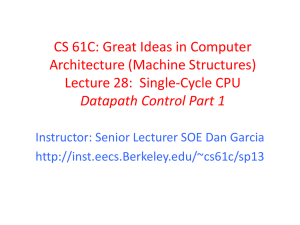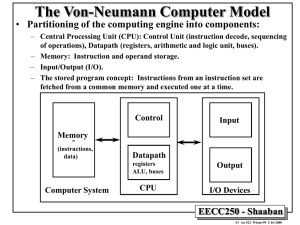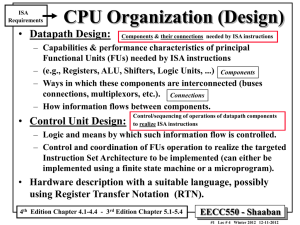What We Learned
advertisement
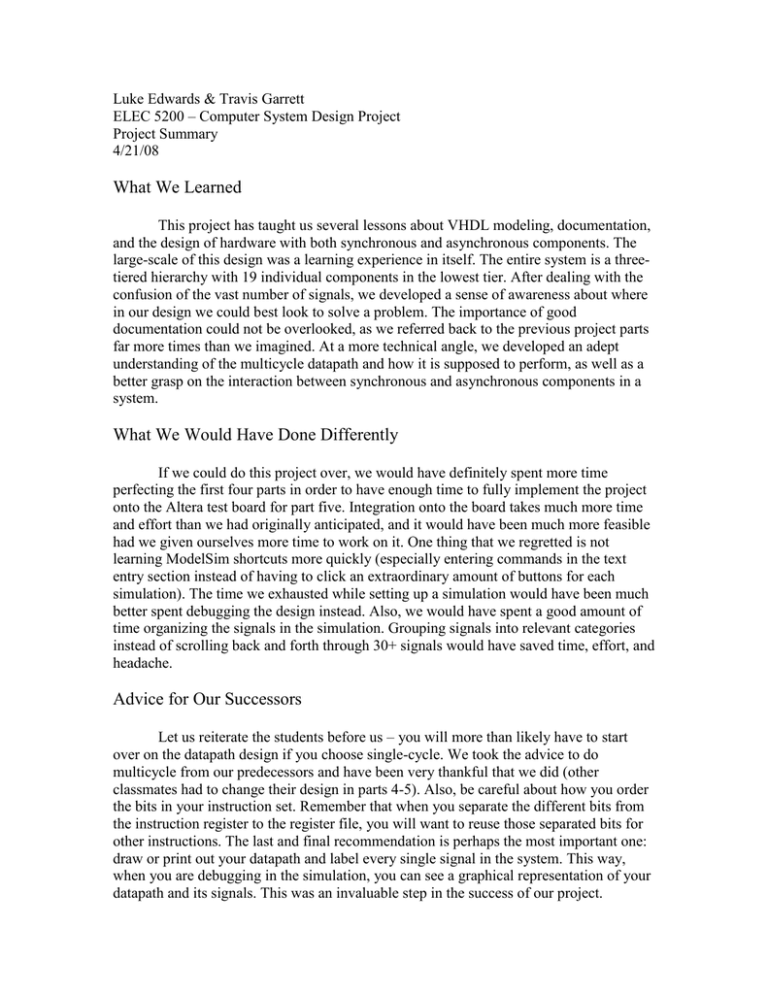
Luke Edwards & Travis Garrett ELEC 5200 – Computer System Design Project Project Summary 4/21/08 What We Learned This project has taught us several lessons about VHDL modeling, documentation, and the design of hardware with both synchronous and asynchronous components. The large-scale of this design was a learning experience in itself. The entire system is a threetiered hierarchy with 19 individual components in the lowest tier. After dealing with the confusion of the vast number of signals, we developed a sense of awareness about where in our design we could best look to solve a problem. The importance of good documentation could not be overlooked, as we referred back to the previous project parts far more times than we imagined. At a more technical angle, we developed an adept understanding of the multicycle datapath and how it is supposed to perform, as well as a better grasp on the interaction between synchronous and asynchronous components in a system. What We Would Have Done Differently If we could do this project over, we would have definitely spent more time perfecting the first four parts in order to have enough time to fully implement the project onto the Altera test board for part five. Integration onto the board takes much more time and effort than we had originally anticipated, and it would have been much more feasible had we given ourselves more time to work on it. One thing that we regretted is not learning ModelSim shortcuts more quickly (especially entering commands in the text entry section instead of having to click an extraordinary amount of buttons for each simulation). The time we exhausted while setting up a simulation would have been much better spent debugging the design instead. Also, we would have spent a good amount of time organizing the signals in the simulation. Grouping signals into relevant categories instead of scrolling back and forth through 30+ signals would have saved time, effort, and headache. Advice for Our Successors Let us reiterate the students before us – you will more than likely have to start over on the datapath design if you choose single-cycle. We took the advice to do multicycle from our predecessors and have been very thankful that we did (other classmates had to change their design in parts 4-5). Also, be careful about how you order the bits in your instruction set. Remember that when you separate the different bits from the instruction register to the register file, you will want to reuse those separated bits for other instructions. The last and final recommendation is perhaps the most important one: draw or print out your datapath and label every single signal in the system. This way, when you are debugging in the simulation, you can see a graphical representation of your datapath and its signals. This was an invaluable step in the success of our project.
